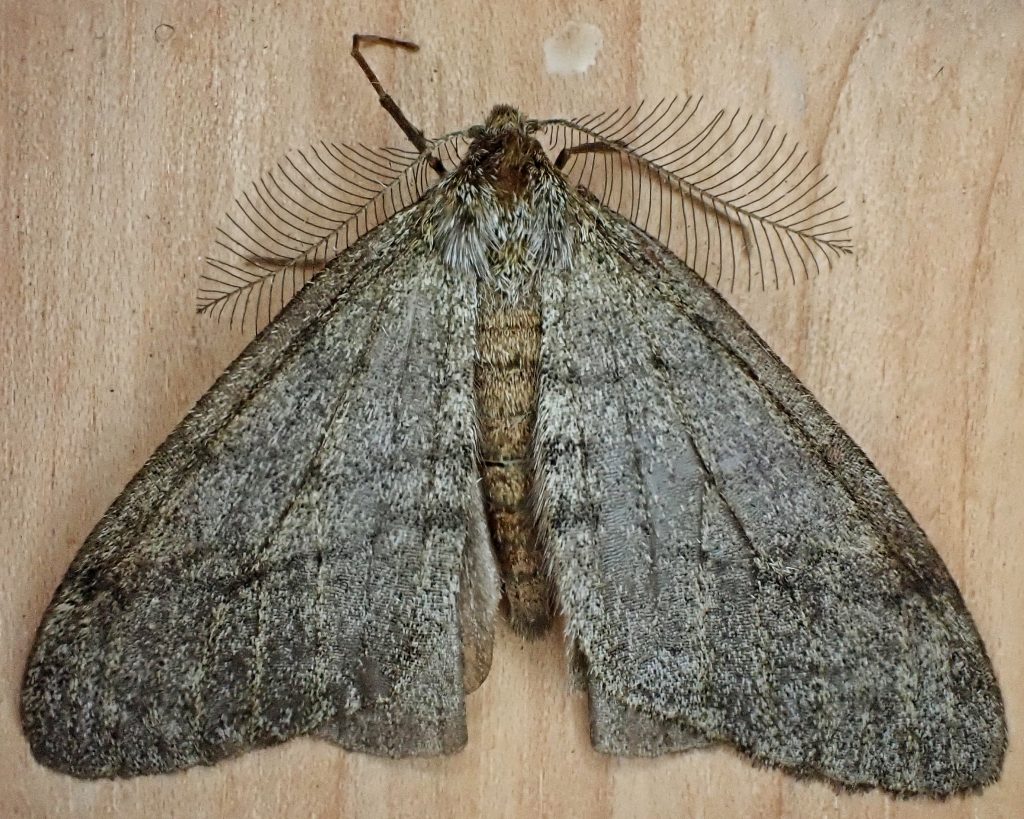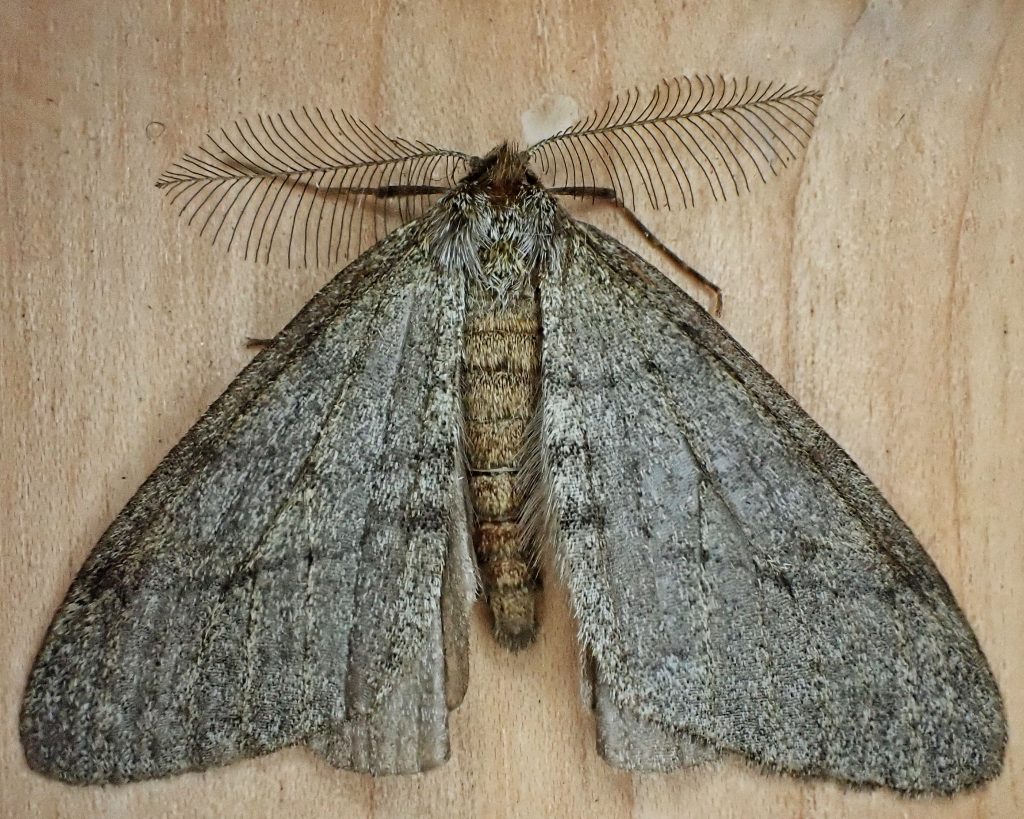
It is always fun to find males of this early season Geometer, because of their large, plumose antenna, by far the showiest antennae in the genus. They use these sensitive receptors to detect the pheromones of female Phigalia plumogeraria, so that they can find and mate with them, a task made more difficult by the fact that the females have only vestigial wings and are therefore flightless, and aren’t moving around to spread those delicious scents. The usefulness of this adaptation lies in the fact that the females can remain relatively hidden until they are bred, and thus reduce their chances of being preyed upon. Unfortunately I have not yet seen one of these females.
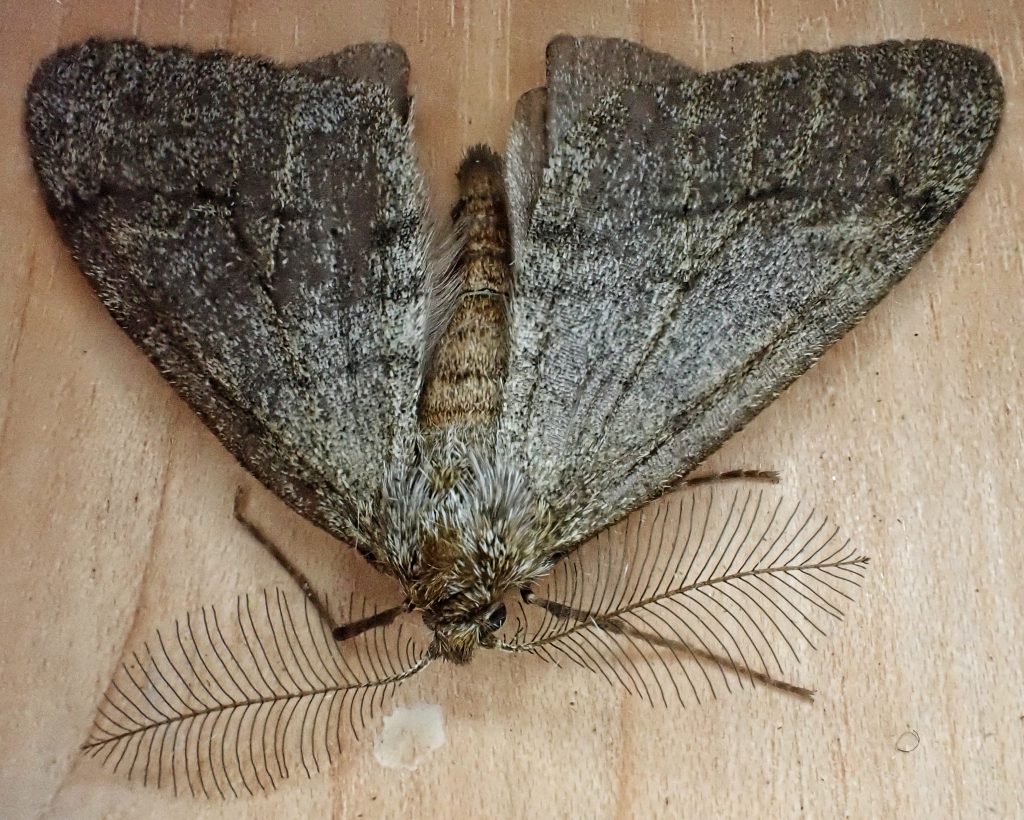
Though Walnut Spanworm Moth is an accepted common name, it is also a bit of a misnomer. Not because the larvae don’t feed on walnuts, because they do, and they can even be a pest in commercial operations. But, being generalists, they also feed on a very wide variety of other trees and shrubs, and don’t appear to have any preference for walnuts. They are also known to achieve pest status in apple and plum orchards, as well a well documented defoliation of antelope bitterbrush that was being raised for restoration purposes.
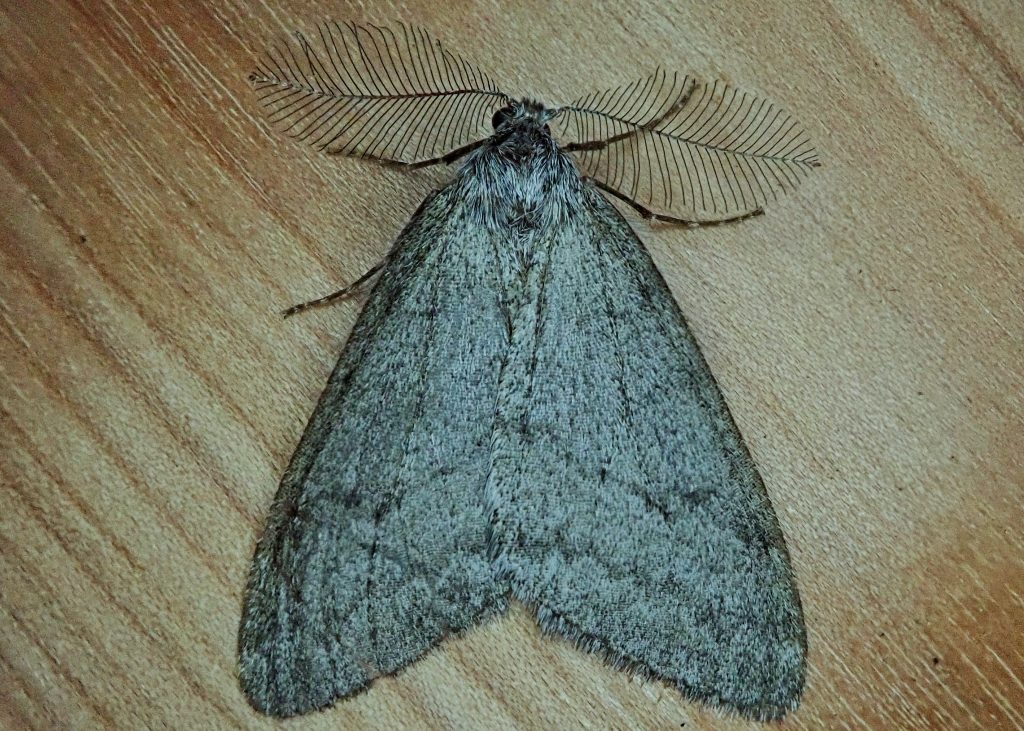
Description-Extreme sexual dimorphism; males are fairly large (fw length 18-24mm), grey with fairly straight, dark transverse lines; females have only vestigial wings, 8-10mm in length, grey, with black segmental banding.
Similar species–Phigalia plumogeraria is the only member of this genus in our area; the combination of size, color, and antennal plumosity is unlike anything else in our region.
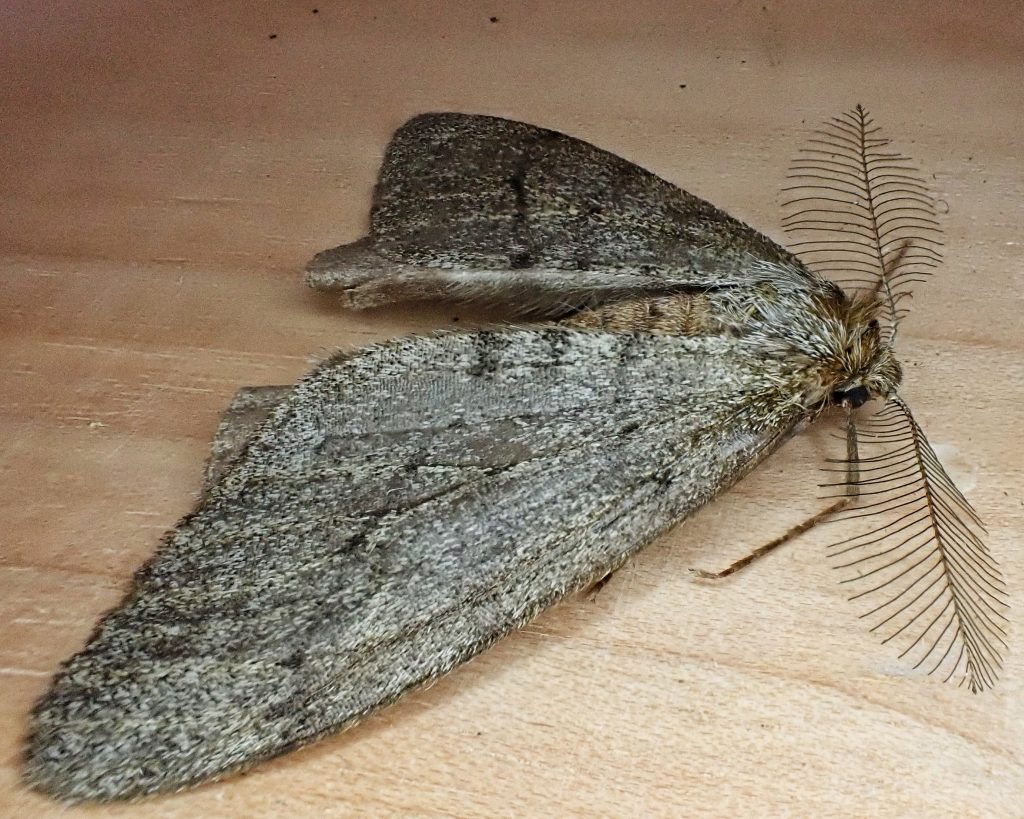
Habitat-Wherever there are larval hosts; most common in moist to mesic wooded areas.
Range– Western North America; region wide in appropriate habitat; more common west of the Cascades.
Eats– Larvae are generalists, feeding on walnut, maple, oak, willow, apple, Purshia (bitterbrush) and Ceanothus (buckbrush) amongst others; it is interesting to note that all moths with brachypterous (wingless or greatly reduced wings) females have larvae that are generalists. This is because dispersal is primarily done by the larvae, and they need to eat wherever they may roam.
Reproduction-Eggs are laid directly on the host plant; larvae fall to the ground and bury themselves 2-4” deep; pupation occurs in a case without any silk, and usually begins in early summer; over winters in pupal diapause.
Adults active-January to May
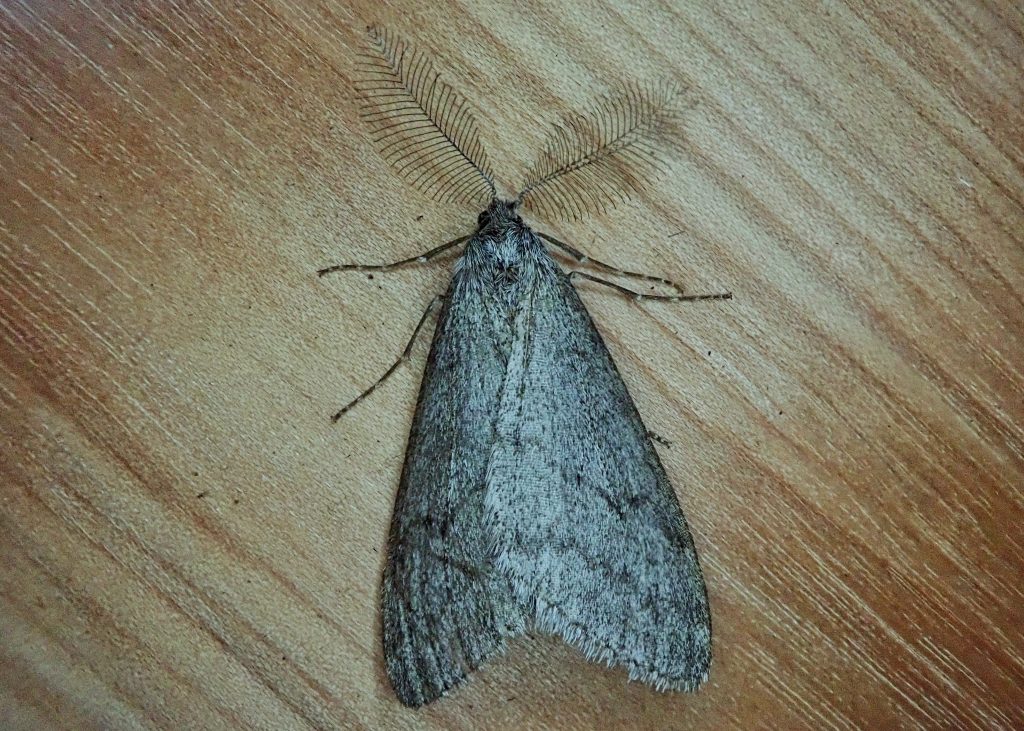
Etymology of names–Phigalia is the name of an Ancient Greek city. I have no idea why Duponchel chose this, but he seems to have had a fondness for Ancient Greek cities, having also named the genus Egira after one. The specific epithet plumogeraria is from Latin and translates roughly as ‘wearing feathers’ which refers to the spectacular plumed antenna.
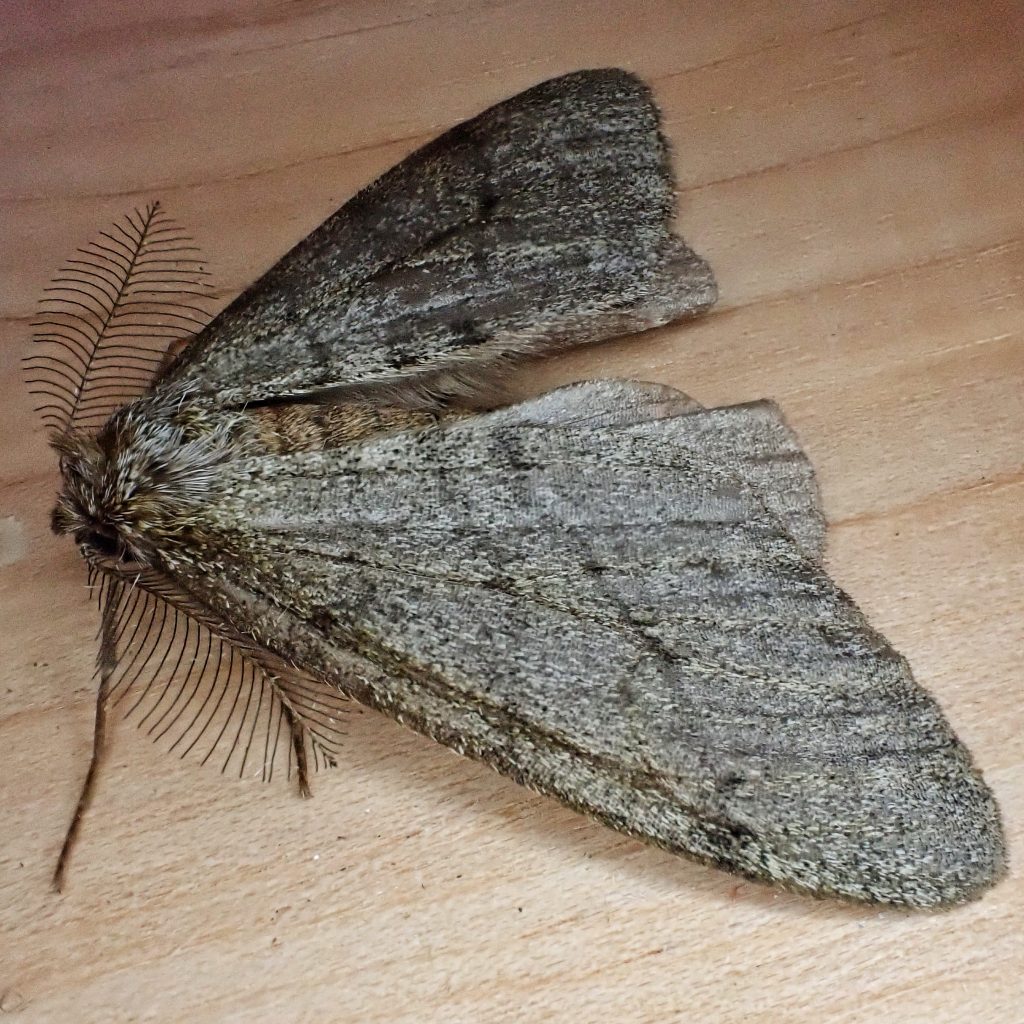
Species Phigalia plumogeraria – Walnut Spanworm Moth – Hodges#6661 – BugGuide.Net
http://mothphotographersgroup.msstate.edu/species.php?hodges=6661
https://scholarsarchive.byu.edu/cgi/viewcontent.cgi?article=2355&context=gbn
https://www.butterfliesandmoths.org/species/Phigalia-plumogeraria
